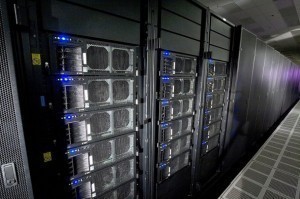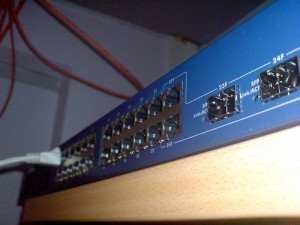Worlds Fastest Computer
The Oak Ridge National Laboratory’s super-computer “Jaguar” has been regarded  by the scientific community as one of if not the most powerful computer in the world. Under the auspices of the Department of Energy, it is utilized in solving the most pressing concerns the planet faces today, such as climate change and the development of alternative energy sources.
by the scientific community as one of if not the most powerful computer in the world. Under the auspices of the Department of Energy, it is utilized in solving the most pressing concerns the planet faces today, such as climate change and the development of alternative energy sources.
But on November 17, 2009, backed by $19.9 million Recovery Act fund, the Jaguar underwent an upgrade that has turned it into the world’s fastest computer. With its Cray XT5 computing system upgraded from four-core to six-core processors, this petascale machine ran an HPL (High Performance Linpack) program at a rate of 1.759 petaflop/s (quadrillion calculations per second). This earned the Jaguar the number one position on the list of the top 500 fastest super-computers in the world.
When the Jaguar was first activated in 2005, it had a top speed of 26 teraflop/s (trillion calculations per second). Going through a string of upgrades through the years, its computational performance has improved a hundredfold. With its most recent upgrade to 37,376 six-core AMD Istanbul processors, its performance capacity has increased 70% more than its four-core precursor.
Aside from the Jaguar, the Oak Ridge National Laboratory also houses another Cray XT5 petascale computing system. “Kraken” is operated by the National Institute for Computational Sciences, which is a partnership between the ORNL and the University of Tennessee. Running at a rate of 831.7 teraflop/s, it places third on the top 500 list of the world’s fastest super-computers.
The main focus of the Jaguar is generating simulations in developing energy technology and how global energy use affects climate change. Researchers have utilized it in examining the root of climate change and how the world affects, and is affected by it; in discovering how biofuel production can be improved by the enzymatic breakdown of cellulose; in designing near-zero-emission power plants through the process of coal gasification; in the development of clean and efficient fuel combustion engines; and in devising how the fuel of a fusion reactor can be controlled by radio waves.
With its new status as the world’s fastest computer, the Jaguar may as well be called the “Cheetah.” It is hoped that the exceptional augmentation of the super-computer’s capabilities would enable scientists to make greater strides in various important fields of research, such as making accurate climate predictions, the design and development of fuel-efficient engines and other unconventional sources of energy, furthering research in improving human health and curtailing diseases, and deeper explorations into the nature of the Earth and the universe.





